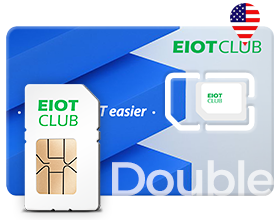Unleashing the Power of Connectivity: Choosing the Perfect SIM Card for Trail Cameras

How do I activate a SIM card for my trail camera?
Activating a SIM card with your trail camera involves a few simple steps. First, you'll need to purchase a SIM card from a mobile carrier that offers coverage in the area where you plan to install the trail camera. Good options to look into are pay-as-you-go plans from major national providers like AT&T, Verizon, and T-Mobile or regional/local carriers that operate in that location. When you purchase the SIM card, inform the mobile carrier that you need a data-only SIM for an IoT (Internet of Things) device, as some carriers offer specialized SIM plans for IoT use cases.
Once you have the SIM card, provide the SIM card number (ICCID) printed to the mobile carrier so they can activate it on their network. This lengthy number is unique to each SIM card. With the SIM card activated, you can insert it into the SIM slot on your trail camera according to the manufacturer's instructions. Make sure it clicks firmly into place. Power on the trail camera and go through the initial setup steps to connect to the mobile network. You'll need to enter the APN (Access Point Name) settings provided by your carrier. Finally, install the companion app on your smartphone that pairs with the trail camera model and sync your camera so you can remotely view images and videos. Remember to top up the SIM card balance if it's a prepaid plan to keep the SIM and data access active. You can monitor usage in the app.
By purchasing the right SIM card, activating it properly, inserting it into the trail camera, connecting to the carrier, and maintaining sufficient balance, you give your trail camera cellular connectivity to unlock its remote capabilities.
How does a SIM card work with trail cameras?
A SIM card is the key that enables a cellular data connection for your trail camera. Here is an overview of how it works: The SIM card stores your subscriber identity profile on the mobile network. When inserted into your trail camera, it links the device to your carrier account. The trail camera can now establish a data connection through mobile networks like your smartphone. It connects to the internet via the nearest cell phone tower, which could be many miles away in remote areas.
Once online, the trail camera can utilize mobile data services to transmit images and video to your app or email them directly. This makes your cameras remotely accessible - you get alerts and can view the content from anywhere in the world without needing to be physically present at the camera location. Data usage is drawn from the data balance or additional data packages enabled on your SIM card plan, and you pay your mobile carrier accordingly. Overall, the SIM card gives your trail camera its unique identity on the cellular network. You no longer need WiFi or satellite subscriptions to enable remote access.
What are the best SIM card options for remote areas with weak signals?
For trail cameras placed in extremely remote locations where cellular signals tend to be weak or unstable, these are generally the best SIM card options: Mobile carriers that utilize low-frequency cellular bands like B17 LTE, such as AT&T and Verizon. The lower frequencies enable signals to propagate further in remot areas.
You can also convert traditional SIM cards into IoT-optimized cards using platforms like Vsetattr SIMs. This unlocks access to NB-IoT networks. Specialist providers like EIOTCLUB are also designed for extremely remote locations. On the flip side, avoid carriers that rely solely on B2 or B4 networks, as these have smaller coverage footprints once you get away from urban areas.
If the built-in cellular antenna in your trail cam still can't get a stable signal, use directional or external booster antennas to enhance reception significantly. Testing different SIM cards on-site and checking carrier coverage maps helps determine the optimal network in your location. Trail cameras that support multi-carrier SIMs allow you to switch networks as needed until you find the best one.
Is it possible to view trail camera photos/videos remotely using a SIM card?
A SIM card lets you view trail camera photos and videos remotely in real time from virtually any place using your smartphone, tablet, laptop, or desktop computer. There are several ways to make this happen: Many cellular trail cams today can transmit images directly to an email address or mobile app like SpyPoint's Link-S, Moultrie Mobile, etc. This allows you to access media instantly from anywhere, simply by carrying your phone. Bluetooth/WiFi-enabled cameras can wirelessly sync media to your handset if you are in proximity, which you can view remotely after leaving the location.
Some plans like Solo 365 even offer cloud storage to view your media online from any internet-connected device - no mobile app required. For the DIY-inclined, you can combine a cellular trail cam with an IP camera controller to stream the footage to your devices. Certain carriers have self-service portals like AT&T's Control Center that let you access media from all your connected devices. For real-time viewing, select trail cameras support live streaming video over cellular to your computer or phone screens. Regardless of whether you're on the trail or in the next town, the right SIM-equipped trail camera lets you monitor your media live from afar, with no waiting required until the next card swap.
Does the SIM card need to have 4G/LTE network support?
While 4G LTE cellular connectivity is recommended for the fastest speeds and real-time viewing, trail cameras don't need to function effectively. Slower networks can also work in certain situations: 3G networks may be adequate for basic functions like sending image emails or text alerts in areas with strong cellular coverage. For remote locations, even slower 2G networks can suffice to transmit lower resolution images a couple of times per day - 2G speeds are around 200kbps. Special IoT networks like NB-IoT offer a greater range than 4G LTE and work well on 2G bands, with speeds reaching 50kbps. If you use an external booster antenna, a weaker 2G or 3G signal can outperform an unstable 4G connection since stability and reliability matter more than speed in remote areas.
Cameras with buck tracking integration need true 4G LTE signals for accurate real-time tracking capabilities. But for most other trail cam purposes, lower cellular networks can get the job done if bandwidth needs are minimal. Ultimately, location and functional requirements determine whether network speeds are sufficient or ideal.
Do I need to know the network band requirements of the device before buying a SIM card?
It's highly recommended to check the cellular frequency band compatibility of your specific trail camera model before purchasing a SIM card. The camera's user manual will specify technical details like which bands, such as B28, B8, B2, are supported. Some trail cameras have different versions designed for specific carriers' networks like Verizon or AT&T - the packaging and marketing materials will indicate cellular band support.
AT&T and Verizon rely on B17 and certain B5 bands in North America, while T-Mobile uses mainly B2 and B4. Internationally, cellular bands are B20, B3, and B7, depending on the carrier and region. You'll have greater carrier flexibility if your trail camera supports multiple band frequencies. But if it only works on a single band, your carrier options will be limited, and you'll need a matching SIM card. Taking the time to check band compatibility ensures your trail camera can properly utilize the mobile network associated with your chosen SIM card, enabling smooth and seamless connectivity.
How can I check my SIM card balance and data usage?
Keeping tabs on your trail camera SIM card's remaining data balance and cumulative usage is easy through several methods: Most carriers have online self-help portals or mobile apps to log in and view real-time details on data consumption. There are also third-party data usage tracking tools like Hologram Dash that provide monitoring and alerts. Some carriers can enable SMS or email notifications when you reach certain data limits or overage thresholds. Cellular trail camera companion apps often have built-in data usage meters and screening tools. Or you can call your carrier's customer support line to request information on leftover data amounts and expiry dates.
If you're using an IP camera controller app with your trail cam, these typically have usage monitoring and configurable alerts. And for cloud storage services associated with the SIM plan, you can check online account details for storage usage metrics. Monitoring data consumption regularly allows you to top up your SIM when required proactively, switch plans if needed, or troubleshoot any connectivity issues. This ensures your remote cellular trail camera stays connected in the field, providing peace of mind while you're away.





















 eSIM
eSIM
 Refill
Refill






